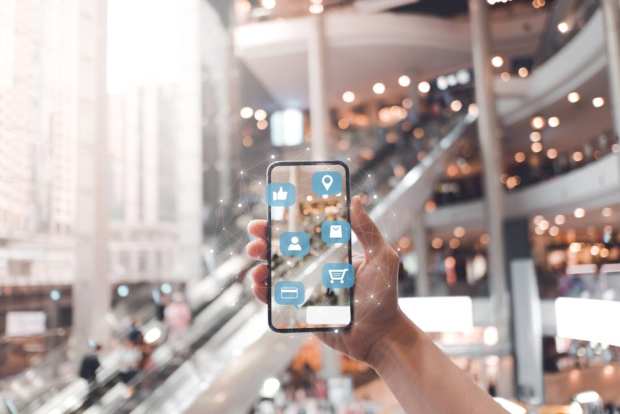There’s More To The Store With Connected Commerce Innovation

Here’s something: Spending in brick-and-mortar stores actually grew at a rate of 4.2 percent year over year in 2019 – an increase that is overwhelmingly pegged to younger shoppers. In one recent survey, 81 percent of Gen Z consumers said they prefer shopping in physical stores.
Wait. What?
Haven’t we been assured that malls and shopping centers will be repurposed into amusement parks and upscale pet condos by autumn? Maybe that’s next year. Or maybe things aren’t going down exactly as doomsday predictions would have us believe. If “Jurassic Park” taught us one thing, it’s that “life finds a way.” So do markets, which are like organisms in that they follow certain behaviors.
The Retail Innovation Commerce Connected Playbook, done in partnership with First Data, now Fiserv, reveals the resilience of live retail – pandemics and same-day delivery be damned. The numbers align with a deepening understanding of experiential consumers.
They Did What?
“The 2019 holiday season provided a glimpse into current consumer buying habits, and nearly half of the 189.6 million U.S. consumers shopping between Thanksgiving and Cyber Monday did so at physical stores,” the report states. That includes Cyber Monday shopping, which seems oddly counterintuitive at this point. The latest Commerce Connected Playbook is full of these contrasts, along with the necessary context to form actionable insights for merchants.
Much of that context comes from expert summations of upgrades, in which retailers of virtually every size are now investing. The report addresses specifics of legacy system layering and offers instructive insights to aid in practical decisions around omnichannel upgrade projects.
“The greatest challenge that brick-and-mortar retailers face is seamlessly integrating their online and mobile technologies with their in-store point-of-sale systems,” John Nicola, senior vice president of retail solutions at Fiserv, told PYMNTS.
“Those technologies are in completely different silos within their organizations in most cases, and the systems are not compatible to allow consumers to start transactions digitally and complete them within a physical store environment. A ubiquitous orchestration layer can help them create that true omnichannel experience for their customers,” Nicola said.
Studies include the amazing case of Ace Hardware’s connected commerce transformation which has created one of retail’s smoothest omnichannel shopping experiences. Embedding the Ace Rewards loyalty program is part of a strategy in seamlessness that’s paying off for the company.
Visual Search and Tactile Tactics
The report concludes with a fascinating deep dive into new horizons in visual search, and what innovation in that space means to the connected commerce ecosystem. Instagram and Pinterest are partially insulated from global turmoil and economic disruption from the consumer usage standpoint – social networks typically get more traffic during times of crisis – so brands are retaining their visual search activities and enhancing online tech to spur more store visits.
Next-gen visual search now is about virtual try-ons and other personalized digital enticements.
“Visual search can combine the best of both worlds. The technology is becoming more affordable and customers are beginning to expect it, meaning competition between retailers will continue to increase,” the report states, adding that, “AI (artificial intelligence) and other automated technologies can sift through individuals’ buying and browsing habits and tailor searches, leading to greater customer conversion rates.”
